by Steve Selden | Jan 7, 2015 | Churchill News
If you have been to Churchill you have more than likely seen the infamous Ithaca shipwreck just off the coast heading toward the airport or polar rover launch-site. The ship rests on the sea-bed 12 miles east of Churchill in Bird Cove.
Built in Three – Rivers, Quebec the Ithaca is eighty meters in length. Operated by the Clarke Steamship Company to deliver nickel concentrate from the works at Rankin Inlet, she sailed from Churchill on 10 September 1960 to collect her cargo, carrying supplies for the settlement. The ship’s rudder fractured in an 80 mph gale force wind and when anchors failed to hold she ran aground on September 14, 1960. The vessel came to rest on the rocky shoals, where it sits today, and all 37 men aboard were rescued.

MV Ithaca (September 2012)
Source: Heidi den Haan
Low tide often allows locals and travelers to walk out to the wreck and gain a close-up vantage point of the rusty behemoth. You will need to keep an eye on the tide chart however as you might end booked in a “rustic” cabin heading nowhere fast. It has happened.
There’s a bit more history of the Ithaca but this is the main crux of the wreck. It stands in the Hudson Bay as a monument to all those seamen that have traveled the waters of the north.
by Steve Selden | Jan 6, 2015 | Churchill News
Birds love Churchill in the summer months when the Arctic food chain grows exponentially to take advantage of the short warm season. The tidal pools and coastlines are teeming with plankton, krill, capelin and many other food sources unmatched by any other region in the world. The pure number of birds migrating to Churchill in the spring certainly is a testimony to the bounty of the Arctic.

Hudsonian Godwit in flight. A. J. Hand photo.
Nearly 250 bird species appear in Churchill over the course of the year. Most of those are “summer” migratory species while some reside in the region year-round. Personally, I feel the ones that come and go tend to be more intriguing.
Today’s focus is on the Hudsonian Godwit, a large shorebird with a long, upturned bill. This bird breeds in the Arctic and winters in southern South America. Because of its remote breeding and wintering grounds the godwit is one of the more obscure American shorebirds.

Fall migration routes for Hudsonian godwits Kendall and Sig. Significant staging areas were documented along Hudson/James Bay and within Colombia, Venezuela, Brazil, and Bolivia. Map by CCB.
Nesting on the mixed tundra and wetlands of northern Canada and Alaska, the godwit travels across the great plains of the United States in the spring then returns south along the Atlantic coast to South America in the winter. Reported nonstop flights of several thousand miles between these sites are not uncommon. At times, in the fall, “touch-downs” on the Atlantic coast are necessitated by northeasterly winds.
The long upward bill of the godwit digs in muddy, rocky or sandy shorelines as well as marshes, mudflats and flooded tundra or fields. The length of the bill allows it to search deep in the earth to acquire insects or organisms unreachable by other foragers. The Hudsonian, however, is the smallest of the four godwit species. In my guiding days I would associate the upturned bill with “god”, (heaven generally thought of as above in the sky) in order to help identify the bird from a distance or while mixed in with other shorebirds. Whimbrels have similar long bills, though slightly curving downwards, and dowitchers have more straight, dagger-like bills. All three are found on the shores of Churchill in the spring and summertime. Due to their similar feather markings and size, the bills are quick and easy identifying symbols.

Hudsonian Godwit in breeding plumage. Seth Kellog photo.
The Allen Bird Club website can be found at massbird.org/allen
Seth Kellogg can be reached at skhawk@comcast.net
Once thought of as one of North America’s rarest birds it now is know to be more prolific. Vulnerability for the species remains quite high as the population is confined to only a few locales geographically.
When found in groups, godwits are generally collectively known as an “omniscience”, “pantheon” or “prayer”. A “prayer of godwits” fits quite nicely with my bill reference for identification. These birds truly are incredible in all facets of their lives.
If you have the urge to track the summer life cycle of the Hudsonian Godwit, come to Churchill with Natural Habitat Adventures! Visit nathab.com for details.
by Steve Selden | Jan 5, 2015 | Churchill Photography
This week’s Churchill photos are of Arctic fox. These beautiful Arctic animals are constantly scavenging for food either on the tundra or out on the sea ice, following the polar bears and feeding opportunistically on their seal-kill leftovers. Often they battle for territory with the red fox year over year. That seems a little harsh considering the “Arctic” fox really is at home.
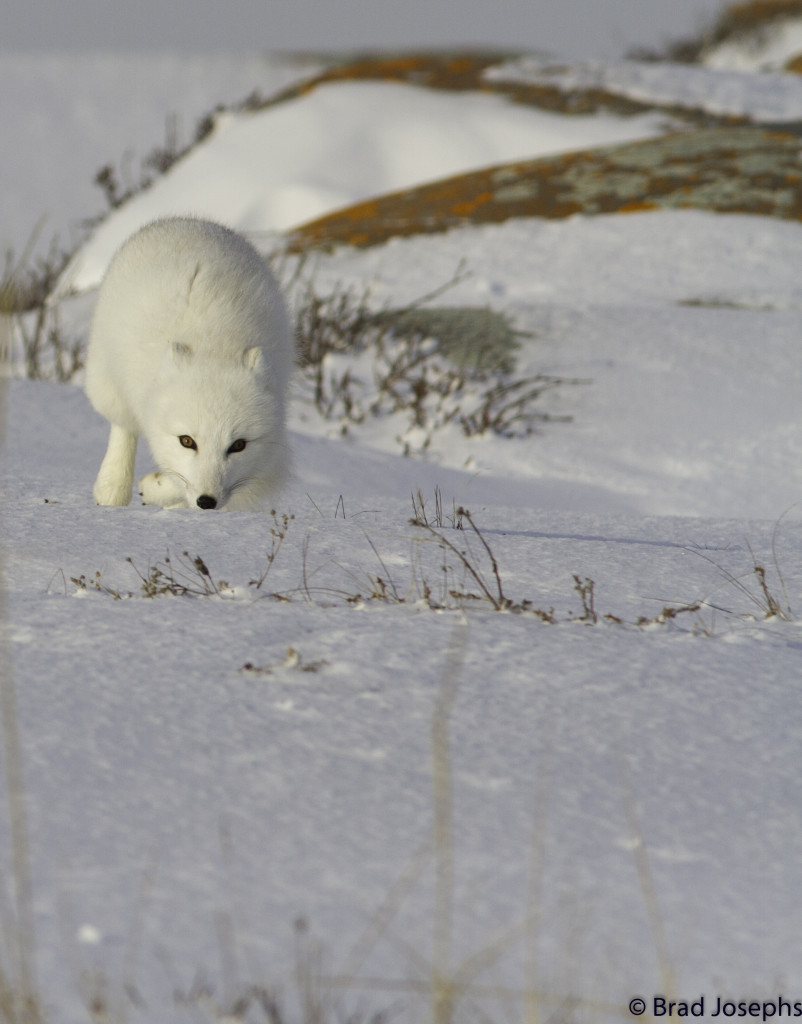
Arctic fox sniffing the tundra for prey. Brad Josephs photo.

Arctic fox moves deliberately across the tundra keeping a watchful eye on a rover. Brad Josephs photo.
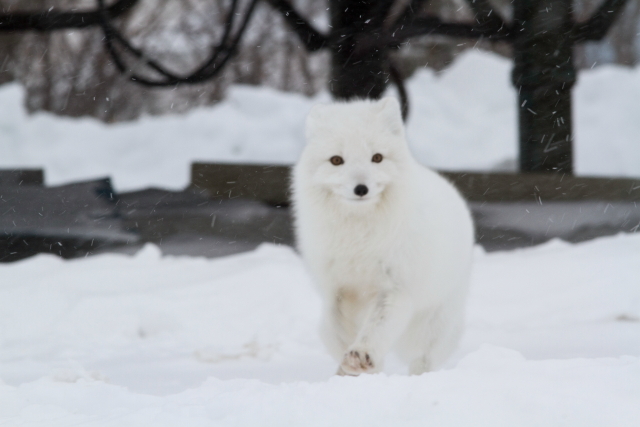

Red fox along the coast in Churchill,MB. Brad Josephs photo.
by Steve Selden | Jan 4, 2015 | Churchill News
The Hudson Bay Quest will begin this year in Gillam, Manitoba on March 13th, 2015. The mushers will sled 271 kilometers north to Churchill, Manitoba.

Hudson Bay Quest.
Looking over the 2015 musher roster one finds mushers from Churchill. Maybe this will be the year a local musher brings home the crown. Here’s a look at the Churchillian contingent of mushers registered at the moment:
Charlie Lundie

Dave Daley

Earnest Azure

Dan Dimuzio

Justin Allen

by Steve Selden | Jan 3, 2015 | Churchill News
Churchill is under a cold siege! The next 14 hours or more are supposed to be very cold in the region. How cold? An extreme wind chill factor resulting in minus thirty and below centigrade is expected. Extreme cold warnings go into affect when the temperatures fall between minus 30 C and minus 50 C for two hours or more.
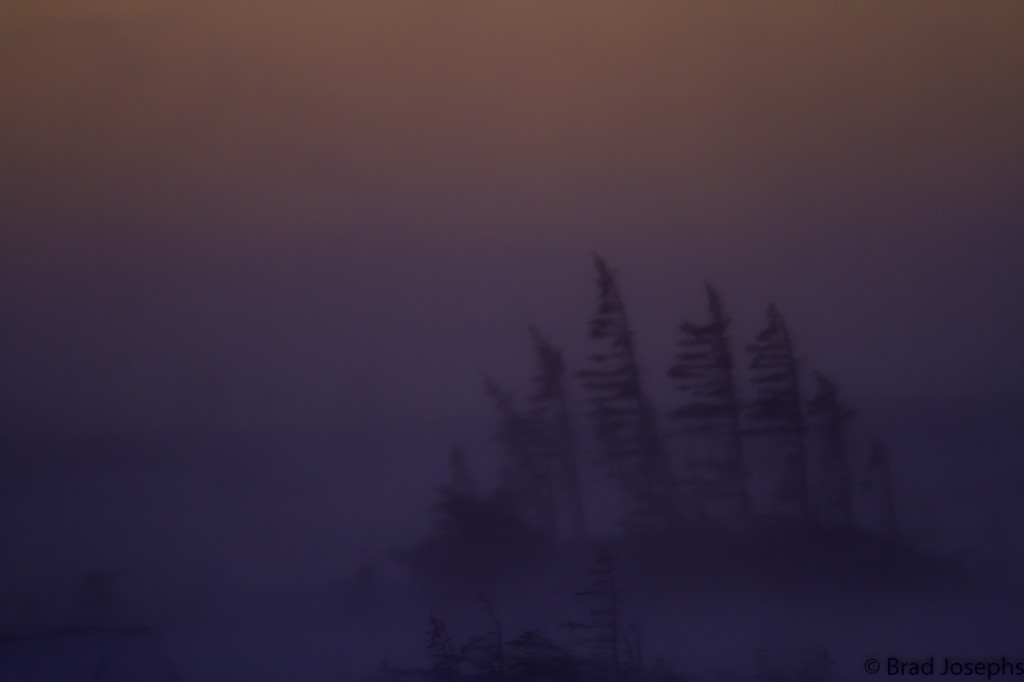
Spruce trees in the blowing snow of a blizzard. Brad Josephs photo.
Churchill is expected to push the minus 50 C level resulting from minus 30 C and below real temperatures coupled with 15-20 km/hour winds overnight into Sunday.
Extra caution is being advised to those people needing to go outside or those who work in the cold.
With the intense cold, the sea ice in the Hudson Bay builds to very thick which will bode well for an extended polar bear seal -hunting season.

by Steve Selden | Jan 2, 2015 | Churchill News
Churchill is known worldwide at the best, most accessible place to see polar bears. Now, if you’ve spent much time in this northern Manitoba outpost town you know there’s much more than the “king” of the Arctic. In fact, often it’s the other animals of this remote land on the shores of the Hudson Bay that give travelers thrills. The unexpected often can be as exciting as seeing the main event.
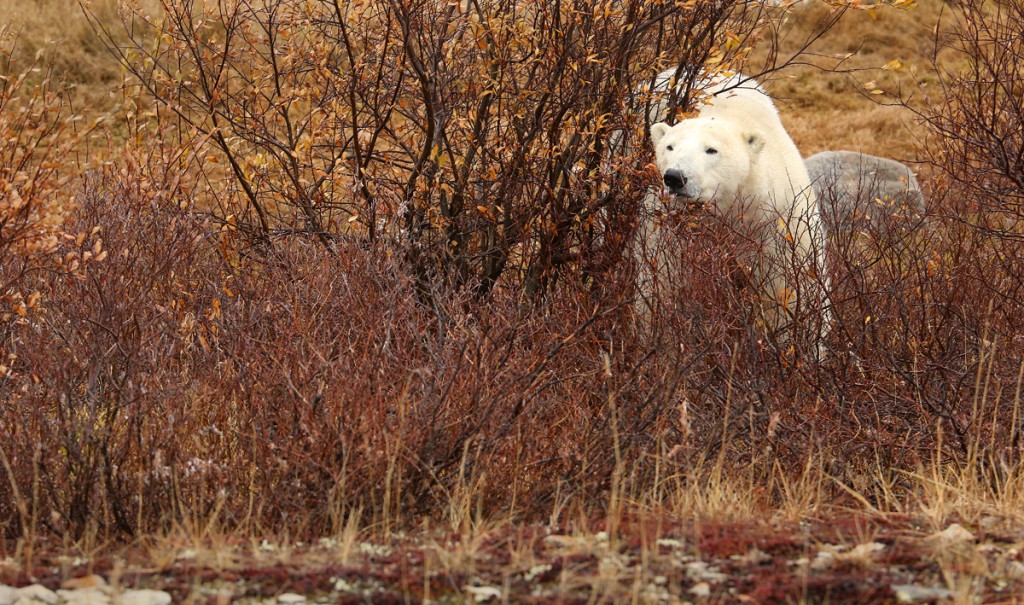
Polar bear in the willows in Churchill. Eric rock photo.
Here are five other animal attractions around Churchill you could see during polar bear season and possibly other times of the year.
1. Arctic Fox– This icon of the Arctic is one of the most beautiful animals in the north. To some extent the white fox symbolizes the Arctic as much as the mighty polar bear. the population tends to run in cycles and fluctuates with the lemming population and will compete from year to year with the red fox.

Arctic fox sniffing the tundra for prey. Brad Josephs photo.
2. Moose– Usually individual moose can be seen from a polar rover or from a helicopter journey over the vast tundra.
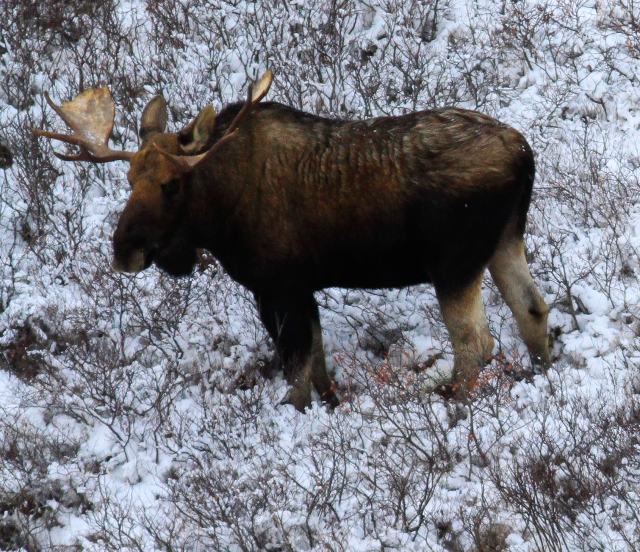
A moose on the tundra. Brad Josephs photo.
3.- Red fox– The “other’ fox in the Arctic has been increasing its range of habitat over the years and even foraging seal-kills out on the Hudson Bay ice pack. The red fox numbers fluctuate from year to year…highly dependent on lemming numbers.

Red fox along the coast in Churchill,MB. Brad Josephs photo.
4. Beluga Whale– Although you will not see this whale during polar bear season, you could see polar bears during whale season which can extend until late August and even early September.
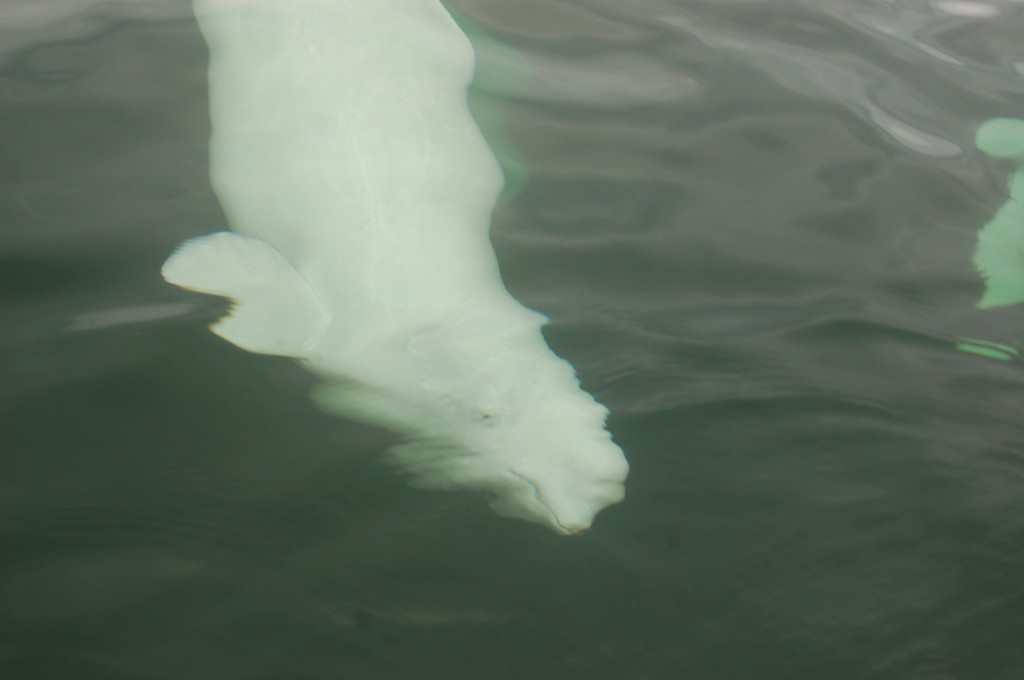
Beluga whale in the mouth of the Churchill River. Photo-Steve Selden
5. Killer Whale (Orca)- A very rare sight in the Hudson Bay. Occasionally these leviathans surface in areas where they can be seen, usually just outside the mouth of the Churchill River. If you are lucky enough to see one the chances of getting a photo are slim.
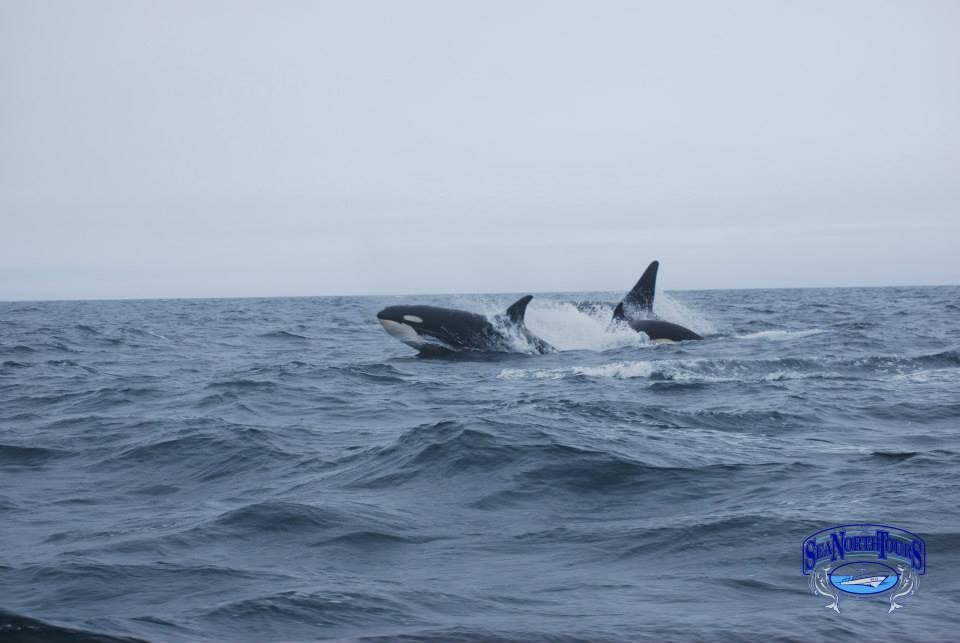
Orca’s in the Hudson Bay. Dwight Allen photo.
Come to the north and Churchill to see these amazing animals with Natural Habitat Adventures! Visit nathab.com for information.





















